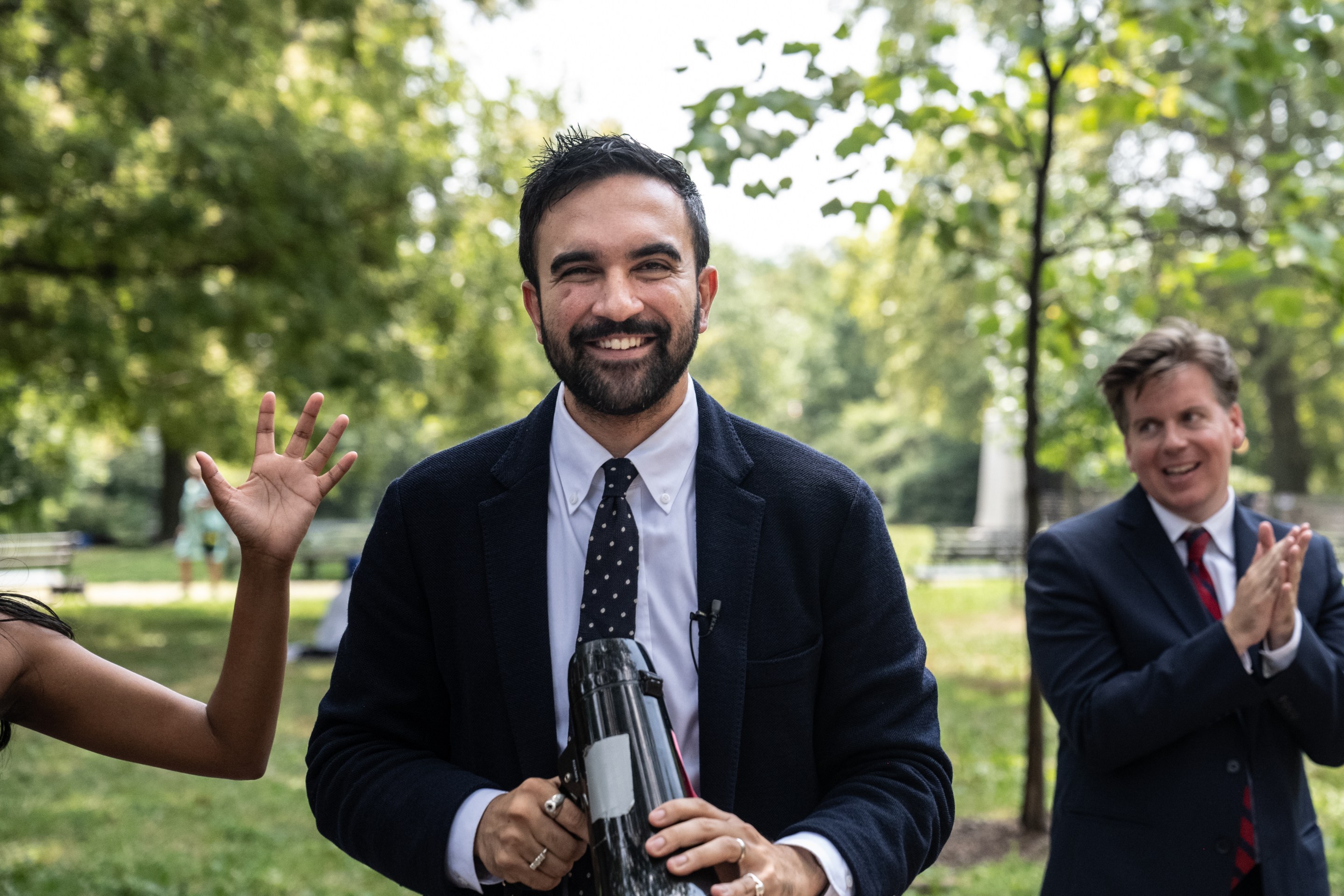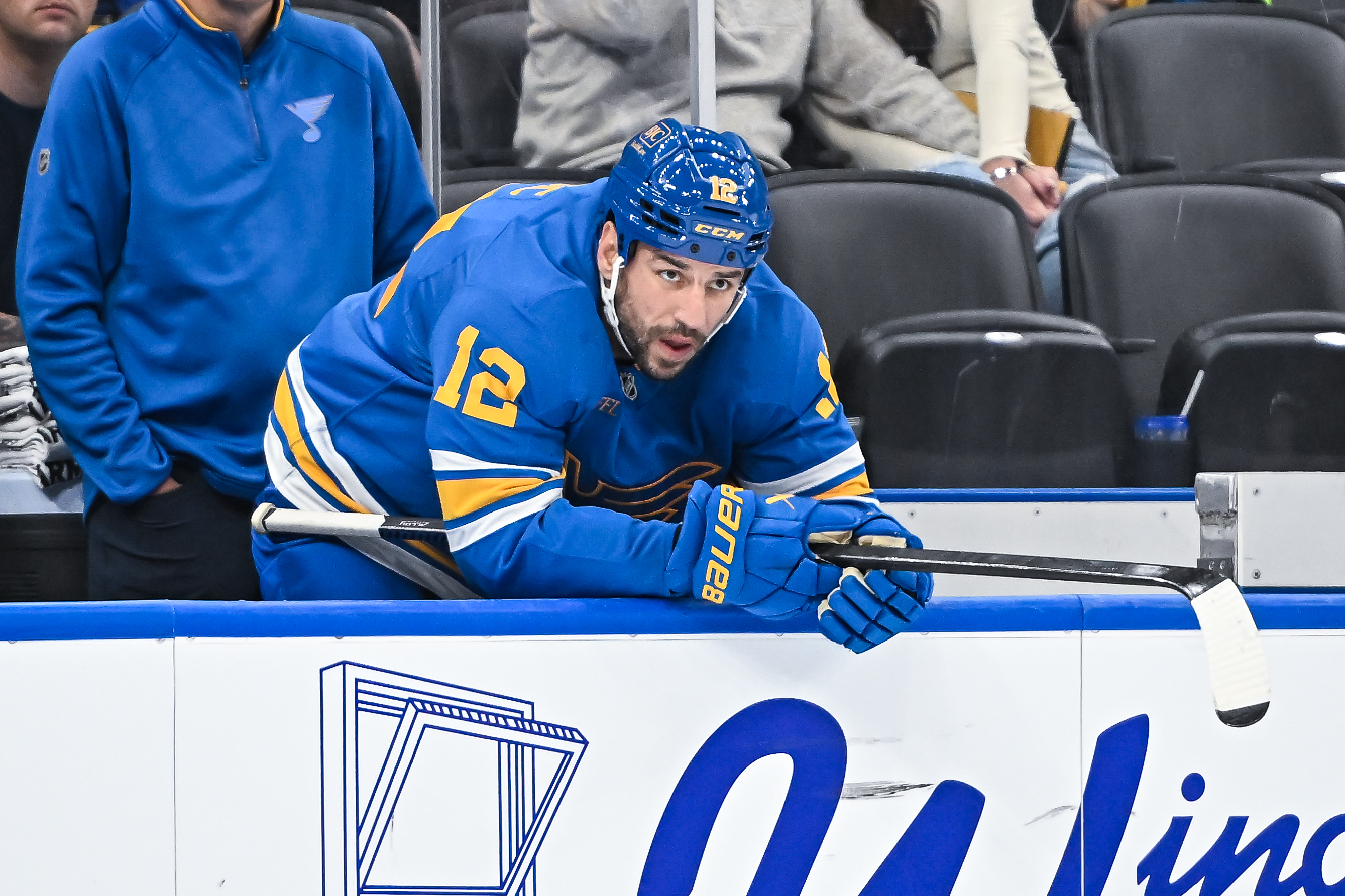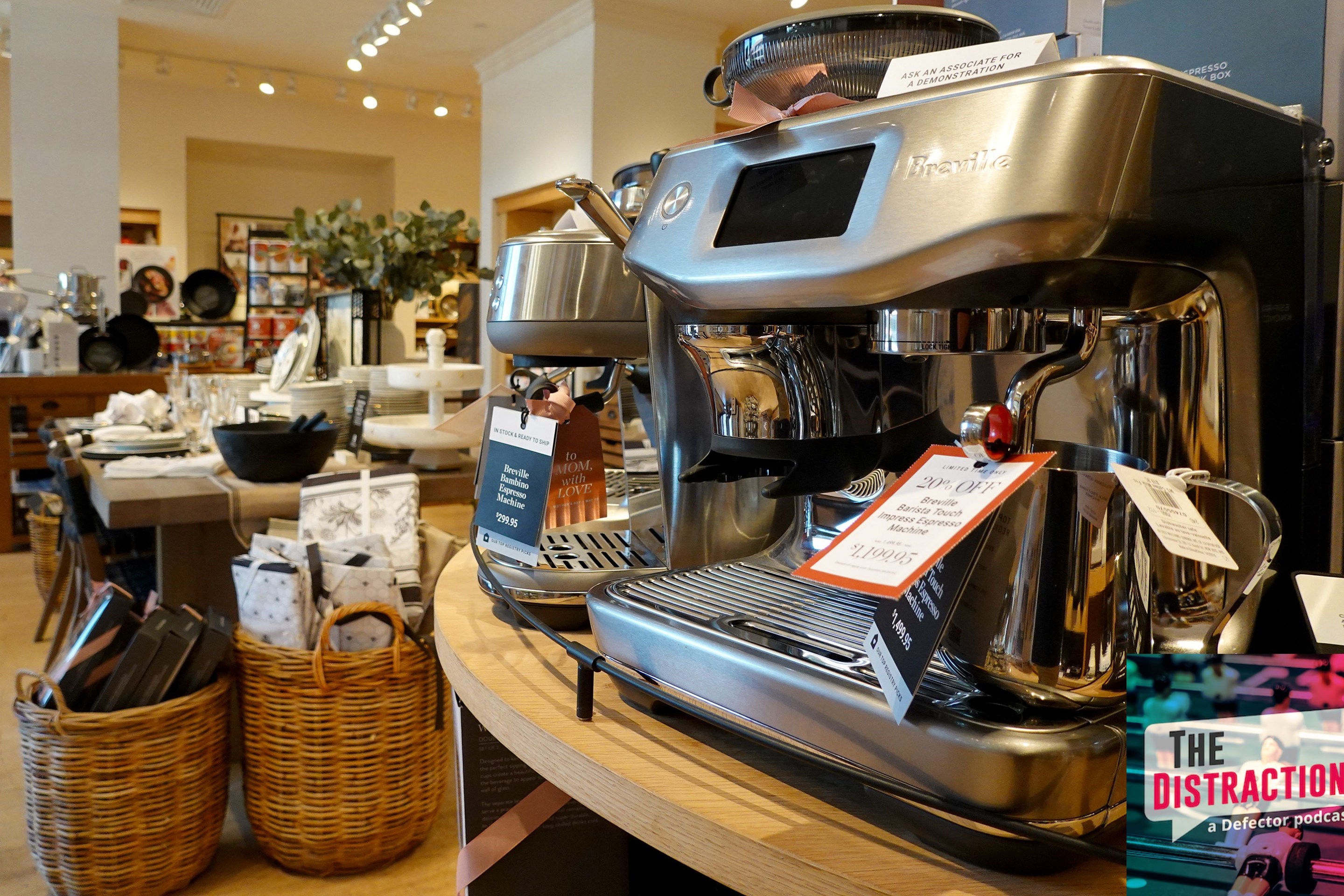On a cool Sunday in November, a few days after Donald Trump’s re-election, Zohran Mamdani stood on a street corner in Jamaica, Queens, holding up a hastily drawn cardboard sign that read “DID YOU VOTE?” on one side and “LET’S TALK ELECTION,” on the other. It was just weeks after the 33-year-old New York state representative and Democratic Socialists of America member had announced his run for mayor on a progressive platform. Nobody walking by that street corner knew who he was. Five days later, the Mamdani campaign released a video titled, “Why did so many New Yorkers vote for Donald Trump?”
Practically indistinguishable from any man-on-the-street video, it features Mamdani talking to a diverse array of local residents. “Hillside Avenue in Queens and Fordham Road in the Bronx are two areas that saw the biggest shift towards Trump in last week’s election. Even more residents didn’t vote at all.” Mamdani was there to learn why. Person after person state their reasons. “Gaza,” says one. “Stop the war,” echoes another. Several cite concerns over economics and affordability. At the end of the video, Mamdani informs the residents that there is a mayoral election coming up, asking if they’d support a candidate with a platform of freezing the rent, making buses fast and free, establishing city-run grocery stores, and instituting free, universal childcare. One man responds, “Absolutely, he’d have my vote all day.” That’s when the candidate introduces himself. “My name is Zohran Mamdani. I’m gonna be running for mayor next year,” he says. “And I’m going to be running on that platform.”
As Democrats were scrambling to explain their massive loss, Mamdani’s campaign-ad-in-disguise hit like a bomb. “That video immediately changed the narrative,” said Anthony DiMieri, the filmmaker and videographer who shot the video. “The typical Democratic Party narrative would have been, Oh no, the deplorables are back. The white supremacists are back. The white nationalists are back. And then you go to New York, to the biggest swing districts, and it's black and brown people, immigrants, Muslim voters. It was like, no, the Democratic Party is severely missing something.”
The Trump voter video spread quickly, shared across social media thousands of times, reaching millions of people. It was reaching politicos, too, who immediately saw something new in what Mamdani was doing. “I heard through the grapevine, ‘One of Bernie Sanders' former campaign managers is sharing it in the Slack channel,’” DiMieri recalled. Veteran campaign reporter and Semafor columnist David Weigel said, “I remember seeing people organically—i.e. not being told to by a campaign—sharing his videos of man-on-the-street interviews after Trump won, where he was looking for people who had voted for Trump. People who had no idea who he was were re-sharing them.” This stood out. “I just saw so many people sharing the Mamdani stuff who didn't know he was running for anything, and that was behind a lot of success,” Weigel explained. “It helped a lot because he was introduced to people as a relatable guy who was funny and cared about New York before they were asked to vote for him or give money.”
The video had substance, too. “It was this antidote after a sense that Democrats ran this safe, scared, cautious campaign that was lying to itself,” Weigel noted. “Here's a Democrat coming out and saying, No, now I'm here. What is it? Tell me your deal? Why did you vote for Trump?”
Not only had the video bucked conventional wisdom about which voters to spotlight, it genuinely intended to meet the electorate where they live, listen to them, and communicate their concerns publicly. The brainchild of Mamdani’s then-director of communications, Andrew Epstein, the whole thing had come together quickly, from first conception to dropping on everyone’s social media feeds. It was the campaign’s first real taste of online virality, said Epstein, explaining how it embodied the aims of the campaign as a whole: “It's populist, not just in its agenda and its diagnosis, but also in its very approach to people.”
In the first poll of the Democratic mayoral primary, in October 2024, Mamdani didn’t rank at all. Seven months later, he won the race in a landslide. During the intervening period, he amassed an astonishing ground campaign, enlisting 50,000 volunteers to knock on over 1.5 million doors across all five boroughs of New York. They earned endorsements from local labor unions, Alexandria Ocasio-Cortez, and Bernie Sanders. Everyone I spoke to from Mamdani’s team took pains to say that video alone did not win the primary, but there is no question that without their success in online video, victory would have likely been impossible. In the final month of the primary, Politico reported the campaign got over 236 million views on Instagram.
Video was on Mamdani’s mind from the start. Before the start, in fact. Back in 2022, still just an assemblyman with little name recognition, Mamdani put together the “Fix the MTA” campaign, a package of eight bills designed to improve the dilapidated New York metro system. For that campaign, DiMieri and Debbie Saslaw, with whom he co-founded the political video production company Melted Solids, created three videos. For one of the videos, the team had pulled a similar move, standing on a street corner for 15 minutes, Saslaw recalled, looking for someone who’d let Mamdani ride the bus with them on their commute for a video about freezing bus fares. Eventually, one woman agreed to participate. “I used to love New York,” the woman says in the video. “Now it’s just where I live.” That line became core for Mamdani as he entered the race for mayor.
Saslaw and DiMieri, already active political volunteers, were inspired to launch Melted Solids in 2019 after seeing AOC’s impressive and eclectic video effort in her first congressional campaign. That year, Saslaw also met Mamdani, who was a local field organizer for Tiffany Cabán’s unsuccessful Queens County District Attorney run. In 2020, Mamdani told Saslaw that he was thinking of running for the state assembly, and contracted her and DiMieri to do a campaign video. Their working relationship grew from there, and all the while, Melted Solids honed their skills with other local races and political efforts, including the Freelancers Union, Rafael Espinal’s run for NYC Public Advocate, Jamaal Bowman’s run for Congress, and more. “We are not just working with candidates, we are voicing the concerns of ordinary, working-class people,” Saslaw said of the Melted Solids style. “We do a lot of campaign videos, but we're profiling and interviewing people who otherwise wouldn't have a platform.” In the meantime, Saslaw and DiMieri pursued other work in more traditionally creative fields, working on documentaries and indie films. DiMieri also teamed up with comedian Kareem Rahma to create the hit TikTok series Keep the Meter Running and its even more successful follow-up, SubwayTakes. That series in particular caught Mamdani’s eye.
“He reached out to me, and he's like, ‘Hey, I'd really love to get on SubwayTakes,” DiMieri said. “I had no idea at the time he went on SubwayTakes [that] he was going to run for mayor.” The episode, which dropped in July 2024, featured Mamdani offering up the take, “Eric Adams is a terrible mayor, and he’s single-handedly making life more expensive for New Yorkers.” For 90 seconds, he goes off on Adams, explaining how the mayor had presided over rises in the cost of rent, electricity, water, and even food from New York’s iconic halal carts. “They’re gentrifying halal, and you know who’s doing it, is Eric Adams,” Mamdani says, explaining the absurd permitting process hamstringing vendors. This was, in effect and unbeknownst to DiMieri, the first real video of Mamdani’s mayoral campaign. Soon after, the two went for lunch and Mamdani laid out his plans. “It's going to be all about the volunteers, it’s gonna be all about video,” he told DiMieri.
“It came from two imperatives of the campaign that we ultimately found video was the best medium,” Epstein said. “One was embedding Zohran in the kind of street-level life of New York City, putting him all over the city, interacting with people over the city in a million different contexts. And, through that, showing a great love for the city, which has become unbearably expensive and far too difficult for people to live in.” The idea was to make Mamdani into a “tour guide to a city amidst an affordability crisis, while also showcasing how the city is the living, breathing antidote to the narrow politics of the Trump administration.”
Most important of all was Mamdani’s straightforward and memorable policy agenda. "It was never just about introducing New Yorkers to the person of Zohran Mamdani,” Epstein explained. “It was also the agenda, and having those things become inseparable.” Video was key to achieving that synonymity. “As our videos were going viral, as people were starting to see him more and more on their phones or out in the streets, it wasn't just, There's Zohran, but, Oh yeah, there's Zohran! That's the freeze the rent, fast and free buses, universal child care guy.”
Melted Solids was contracted to produce two videos per month. “That remained basically our contract through the campaign, with the exception of the final month, when it was just full-court press,” DiMieri said. “The contract’s out the window, and it was everything you can possibly do to win.” They had come in with a pitch deck featuring dozens of ideas. “We want to do documentary style, we want to do goofy things, we want to do heartfelt things, we want to do serious politics.”
For the Mamdani campaign, the key to video was simply trying things. Different things. “In the beginning stages, our strategy was not: let's do this again because it worked. It was: let's do this because it's relevant and timely,” Saslaw said. “So when the Trump video worked, we were like, we said, hey, you know what? Let's go to a bunch of halal carts and talk to some halal cart owners.” The halalflation video—a joke DiMieri made during the shoot, which Mamdani immediately seized on—dropped in January. In it, Mamdani introduces the concept while chowing down on a $10 halal plate, and then talks to a group of halal truck vendors about how the city’s backlog of permit applications has led to them paying actual permit-holders exorbitant fees to use their licenses. “You pay the permit owner $22,000 just so you can sell this food?” he asks one vendor. “Yes,” the vendor says. “And who is this?” Mamdani wonders. “A random guy,” says the vendor, who is around 3,800th in line for his own permit approval. The video received nearly 20 million views on Twitter, and millions more on Instagram, TikTok, and elsewhere.
“I remember when the halal video was posted, there were all these comments on Twitter that were like, ‘You know, yeah, it does cost you more,’” Saslaw said. “It was just a topic that people hadn't heard much about, and it was a direct way of approaching it. It costs this much because of the permits.”
With the campaign beginning to find its footing both on the ground and online, the team needed extra hands. Filmmaker and video producer Donald Borenstein joined up in January. Borenstein had worked with various nonprofits, DSA, Michael Moore, and former congressional representative Jamaal Bowman, which is how they first met Mamdani. In December, they made a video about DSA’s canvassing operation for the campaign before being brought on officially. For Borenstein, Mamdani was both an inspiring politician and an exciting subject. “He's someone who can listen, with a genuine interest in literally anyone and everyone in the city,” Borenstein said. “It's something that, the second you see it as a filmmaker, I think, I have to convey this somehow.”
Borenstein’s videos were smaller, quicker, and even more adventurous than what the campaign had produced to that point. In the first couple of months, with little money, they shot on an aging Panasonic GH-5 digital SLR camera, perfect for packing as they biked around town to various shooting locations. The timeline on their videos was quicker, too, focused more on direct-to-camera address from Mamdani as he walked the streets of New York, coming up with increasingly creative ways to shake up the form. “Donald was almost freestyling an aesthetic that’s now sticking. But I’m just watching it evolve in real time,” DiMieri said, citing one example. “I’m like, God, why is Zohran delivering his line in a tree?” Borenstein’s response: “We like it that way.”
“Sometimes I have to reel them in. And Zohran has called me, quote unquote, ‘the bit warden,’” Saslaw said. “Donald is the person who's bringing out that humor in Zohran.” Among the many videos Borenstein made were popular ones in Urdu and Spanish, along with a video explaining Mamdani’s city-run grocery store pilot proposal, and another announcing the campaign had hit its fundraising limit. Along with the humor, Borenstein also played around much more wildly with the campaign’s video aesthetic, pushing their already established documentary style into more cinematic territory. “I love zooms and whip pans and goofy edges. I grew up on slapstick comedy, and goofy exits and entrances, but also the independent 16mm films of ’70s and ’80s New York,” they explained. Borenstein is also well aware of social media talk about a so-called “filter” applied to every video, like a typical Instagram post. “My psychic warfare?” they joked, explaining that color grading on each video is arrived at organically, through a series of steps, which have trended teal. “That’s a specific affinity I have for tungsten-based film stocks,” Borenstein said. “I actually used to tend towards warmer colors, and embracing teal and green has been a nice change for me.”
Borenstein cited a bevy of influences that run the gamut, from Abbas Kiarostami’s Close-Up and John Cassavetes’s Shadows, to pop-y ’80s films like Smithereens and Liquid Sky. Carol Reed’s classic The Third Man became a key reference for shooting videos that needed to work in both widescreen and vertical video formats—they opted to shoot many videos in the old 4x3 aspect ratio to make things easier, adding, “Like any filmmaker, I have a hate/hate relationship with vertical video,” which DiMieri seconds. Borenstein also references the films of Wong Kar-wai and Christopher Doyle’s lush, urban cinematography. Then there are the less expected influences, like the Canadian mockumentary series Nirvanna the Band the Show, and Adult Swim’s Tim and Eric Awesome Show, Great Job!
“Tim Heidecker and Eric Wareheim are two of the most influential filmmakers of the 21st century,” Borenstein said, referring to the duo’s unconventional style of cutting, quick push-ins, and the general “roughness around the edges” that gives their work a real DIY feel. “More than anything, I just watch a bunch of dumb comedy. That's why wipes and whip pans and stuff are such an important part of the visual language.
“I love that kind of beat, and I think it can be deployed even in ways that are disarming and earnest,” Borenstein said. They pointed to the video Mamdani did about Mahmoud Khalil, who was kidnapped by ICE and sent to a detainment facility in Louisiana to await deportation for the crime of protesting the genocide in Gaza at Columbia. Shot in one day and released the next, the video features Mamdani telling Khalil’s story while standing in the very lobby where he was taken. It’s shot quite beautifully, with one particularly memorable shot of Mamdani through a convex security mirror in the lobby. “The Mahmoud Khalil video was extremely serious, but I kept a lot of the visual language in it,” Borenstein said.
It was never just about introducing New Yorkers to the person of Zohran Mamdani. It was also the agenda, and having those things become inseparable.
A zanier approach, of course, pays dividends in more comic videos, like the one informing people of New York’s voter registration deadline ahead of the primary. “The election is in your hands,” was the video’s refrain, matched in goofy fashion by Mamdani’s attempt to keep his hands in his pocket the whole time. “My team says I move my hands too much in my videos,” he says at the start of the video, smiling. It ends with a member of his security detail smacking his hand when he finally pulls it out of his pocket. “That was another one where it was like, Okay, we have half an hour to film this, we know we want to talk about this. We have the script. We have a visual conceit. And that one, that one was Zohran,” Borenstein said. “He's a very active collaborator. He has great ideas. He's willing to poke fun at himself.”
Mamdani’s great collaborative energy is a common refrain from Mamdani’s video team. “Zohran is incredibly adaptive and excited,” DiMieri said. “A new idea will happen, or a new premise, and he'll just be like, ‘Yes, let's do this.’ It seems like he gets energized in the process.” Documentary filmmaker Olivia Becker was brought onto the campaign’s video team in June, during the last month before the primary. Dropped right into the fire, she couldn’t have been more excited. “I was, like, drinking from a fire hose,” she joked. “I love campaigns. It's the fun part. The most fun part of the campaign is kind of in the last month.” Between documentary projects, Becker has worked on other, smaller campaigns, but she could tell Mamdani’s was something different. “I've been watching these videos over the last six months, just sort of watching from the outside, being like, ‘Oh my God. These are amazing.” Coming into the campaign, she quickly understood why. “A lot of the ideas come from him,” she said. “And then a lot of it is him trusting us to do our thing.”
“The thing that's such a credit to him specifically, is trust. They let us cook,” Borenstein said. “There's an openness to try new things.” That has included establishing an eclectic array of aesthetics for the campaign’s videos, built on shared principles more than a specific style. “None of us came from the world of political advertising. None of us came from the world of even political comms,” Becker said. “I come from film, documentary. Anthony comes from film. Deb comes from marketing. Donald comes from—Donald comes from outer space. None of us even know the rules of traditional NGO or D.C.-type political communication, so I don't even think it occurred to us to do it that way.” Having a candidate with a clear message that he really believes in helps, too. “Zohran is not someone who’s focus-grouping. We’re not anguished about, like, ‘What's our message? What should we say?’” Becker explained.
And while Mamdani always knows what he wants to say, that’s not all you hear in the videos. “Sound is a big part,” Becker said. “I try to not keep it too clean or too pretty, you know. I think it's fine that we hear the cars in the background, and we hear people yelling on the subway, and we hear his mic sometimes just stop working, and that's okay. I try not to be too precious about the sound, because I feel like that's certainly my experience in New York, is noise, in a good way. It’s part of the soundtrack.”
Shooting New York is a tall order, given how well-photographed the city is. “We don't do a lot of drone shots. We don't do a lot of big sweeping landscape shots. We do a lot more of people on the street, and tight shots of people walking by, or little tableaus,” she said. “It can feel kind of messy. It can feel frantic. It's a lot of handheld. This sounds like film-bro aesthetic choices that we're making, but a lot of it is just by nature how we're shooting. Sometimes we only have 20 minutes and we don't have a tripod. But I think we've all leaned into that and been like, Listen, we're not on a studio set. We're not on the backlot at Sony. We're in New York City, and it's going to feel like it.”
In May, the campaign released a video in which Mamdani himself barely appears. Instead, it focuses on the then-already impressive canvassing effort by the campaign’s thousands of volunteers. For the video, DiMieri and Saslaw interviewed 30 volunteers across five boroughs, which opened their eyes to just how effective their work had been. They heard over and over from canvassers inspired to join the campaign effort after seeing one of their videos on social media.
This had been, in part, the goal all along. “We knew that if he did get press, the press surrounding him would be about issues that he wasn't talking about,” Saslaw said. “It’s not that we wanted to bypass the media, but we really just did want to build a platform for others to get involved in the campaign.” The simplicity of the messaging as conveyed in the videos also made it easier for canvassers to make their pitch at the door. “We wanted to build his internet following for that reason, to have this direct feedback loop between canvassers and the videos that we put out,” she explained, citing examples of people greeting volunteers at their door, only to realize they’d already seen some of Mamdani’s videos on TikTok or Instagram.
“The whole media production effort and the campaign, more broadly, was like an antidote to doomscrolling,” DiMieri said. Despite being produced by a cohort familiar with the hellish trenches of Twitter, they understood that direct, hopeful messages played a lot better on modern video platforms like Instagram Reels, tending to get boosted by the algorithm as people excitedly shared each new video with followers, friends, and family. “To be joyful now, given the world, is really hard, and being able to keep some sense of joy in these dark times was really important,” DiMieri said. “There was this channeling of all this negative energy into something positive.”
On the last Friday before the primary in June, 82-degree weather, Mamdani started a trek in Inwood Hill Park “at the tip top” of Manhattan, walking south down the whole length of the island. The campaign had been debating doing the walk, but Borenstein was busy pulling an all-nighter the day before, only going to sleep around 5 or 6 a.m. “When I went to bed, the walk was off, and I woke up and the walk was on,” they recall. “I kind of scrambled and hit up as many volunteers who'd offered in the past as possible. ‘Hey, we're doing this insane thing, you want in on it?’ In the span of two hours, I was able to coordinate people for full coverage of the entire length of Manhattan.” According to Borenstein, Mamdani didn’t need to change his shirt once. There were seven videographers, capturing hours of footage, which Becker then had to edit into something coherent. “I got home at like 3 a.m., and the next day I woke up and I just sort of wrangled all this footage from all these different videographers,” she said. “I was so inspired by that walk. Just being there was so transformative. It was truly one of the coolest nights I've had in New York City. I had never just been around someone people were pulling over their cars [to meet], and every type of person in New York City.” Watching all the young people, and grandmothers, and street vendors, and others excited to see Mamdani became the organizing structure for the final video, which was released online just three days later.
Attempting to talk to “the people” is nothing new in political advertising. “A lot of Democrats have done it,” Weigel said. “You can learn some of this, but some politicians look super fake doing it.” He relates it to the problems traditional media outlets have had reaching an audience in the social media era. “Why is TikTok influencer media successful and other media shrinking? Everyone will tell you, usually for a consulting fee, ‘Well, it's because it looks like the guy in the TV studio is lying to me, and it looks like the person on their phone smiling and joking around is real,’” Weigel said. “The Zohran videos just looked more natural on your feed. It was just him, and it was him in the city. He was flitting around New York, actually trying to explain himself, which then he dramatized with his walk across Manhattan.” According to Weigel, Mamdani also met the moment with his messaging on New York and the country’s growing affordability crisis. “If he ran on an affordability agenda in 2013, it wouldn't have been as effective.”
When primary day finally rolled around, Mamdani won. By a lot. Thirteen points ahead of Andrew Cuomo in the final round of ranked choice voting. Getting there from zero percent was an unlikely task that involved a mass mobilization on the ground, as well as online. “Obviously, it's kind of Zohran himself, and how dynamic and charismatic he is, and how his approach to politics connects with so many people in this moment,” Epstein said. “And then running at everything like it was the last day before the election for eight months. On the internet, we were pushing ourselves on a daily and weekly basis in November and December, months before anybody clued in. We were pushing ourselves on every single day, What can pop? What can work?” He added, “It got to a point that by like March or April, you just could not open your phone and not see content by us or about us.”
For the video team, the close collaboration and sense of creative freedom allowed them to craft a video campaign that could meet people where they are, on the street and on their phones. “For me, a lot of thinking about how to frame and pace these videos is about, how do I pull someone in quickly in a way that's respectful and on our terms,” Borenstein said, “but also meets them, cell phone in hand, probably when they should be looking up at an intersection or on the train or in line at the grocery store, or when they're avoiding work, or when their kid is screaming.” Now well into the general election, roles have been updated, as well. Along with Epstein trading his comms title for Creative Director, Borenstein has become Director of Video, with Saslaw as Senior Producer and Becker and DiMieri as producers.
Last month, after the primary, when Mamdani wanted to announce a break in his campaign for a trip to Uganda to celebrate his wedding, the crew put together another video. Reading off racist tweets urging him to “go back to Uganda,” Zohran responds with a smile, “I hear, and I agree,” adding, “But do I apologize to the haters, because I will be coming back.” He follows it up, sharing a series of photoshopped New York Post front pages with headlines like, “Uganda Miss Me,” and, “He Afri-can’t Be Serious.” It’s pure sketch comedy: quick-cut, funny, charming, and like so many of Mamdani’s videos, earned millions of views across social media. But that video, too, came from an earnest place. “The tweets made me upset, because I hated seeing racism about my friend,” Saslaw said. “I didn't want to find a bunch of racist tweets about my friend.” In the span of about a day, they neutered the vitriol and found fun in the attacks.
The campaign even makes outright attack ads fun. Last week, Mamdani dropped a video attacking Cuomo over a number of scandals and shady dealings, including drawing a link between the former New York governor and Jeffrey Epstein. “The video largely came out of my frustration that no one had really put together the disparate reporting on Cuomo's post-gubernatorial consulting work,” Andrew Epstein said of the ad, which was pitched, written, shot, and edited in just over 24 hours. “I had tried during the primary, unsuccessfully, to pitch journalists on it, but at some point it occurred to me, we could just tell the story ourselves.” Despite focusing on Cuomo’s misdeeds, the video loses none of the campaign’s zip. Embodying what one Bluesky user called “Bugs Bunny energy,” Mamdani cheekily pokes at Cuomo for “getting trounced in the Democratic primary,” his “definitely not vague” legal consulting business, and pops out from behind a tree branch to call Cuomo out for not disclosing his clients. “Zohran is always the key to balancing the tone of these videos. He has a unique ability to land a punch while winking at the camera,” Epstein added. The line at the end, “Habibi, release your client list,” was Mamdani’s idea.
Running an earnest, joyful campaign, built on a message about affordability and basic dignity that everyone involved believes in to their core, seems like a simple proposition, but so many campaigns fail to pull it off, paralyzed by concerns over image and what the donor class might say. “Fear of cringe and embarrassment is a real obstacle to retail politics,” Epstein said. Mamdani, who started his campaign as the longest of long shots and is now the favorite to become mayor of New York, shows no fear at all. His video team has taken his lead, leaning into earnestness and an inviting sense of play, discovering a winning strategy along the way. Or, as Saslaw described it, they’re “just a group of friends embracing the city and making movies about it, and they just happened to be for a political candidate.”







